

Visible Roots


Central Africa / Peace Day

Editor'sNote
Welcome to the 6th issue of Visible Roots, the global diversity magazine of The International School of Dakar! As we dive into our 2024-25 school year, we're excited to bring you this special issue focused on the dynamic cultures, histories, and people of Central Africa.
Join us as we explore the leaders, authors, artists, athletes, musicians, scientists, and cultural attributes of nations such as Chad, Cameroon, Congo, DRC, Angola, and Gabon. Central Africa's natural beauty and resources its tropical rainforests and rare species like gorillas and forest elephants are as diverse as its people. And while its music, dance styles like Rumba and Makossa, and rich mineral wealth shape its identity, the true essence of this issue is about understanding the powerful role culture and heritage play in shaping our shared world.
In this edition, we also introduce our theme on Peace Day and Peace Week at ISD, celebrating student voices across Africa through the "Peace You Have My Word" writing competition. This year, students explored three thought-provoking themes: "I Am a Powerful Africa Peacemaker," "Peace is a Palaver Tree," and "No Sustainability, No Peace."
Let’s learn, celebrate, and grow together!


The Iroko tree (Milicia excelsa), also known as African teak, is one of the most important trees in Central Africa, particularly in the Congo Basin. It plays a crucial role in the rainforest ecosystem, providing habitat and maintaining biodiversity, while also being deeply embedded in local cultures, where it is often considered sacred. Economically, its durable and attractive wood is highly valued for furniture and construction. Additionally, the Iroko tree significantly contributes to carbon sequestration, making it vital for both the environment and local communities.

The Tree of Life
NOTE: Visible Roots is an INTERACTIVE magazine! Just click on any portrait, and you will be taken to a link that shows each person or cultural aspect through video.

62 4
CENTRALAFRICA
Leaders
Authors
Artists
Athletes
Scientists
Musicians
Cultural
Heritage
2 53 4
PEACEDAY
I am a powerful Africa Peacemaker
Peace is a Palaver Tree
No Sustainability, No Peace
Did you know ISD is actually one of the most diverse international schools in the world?
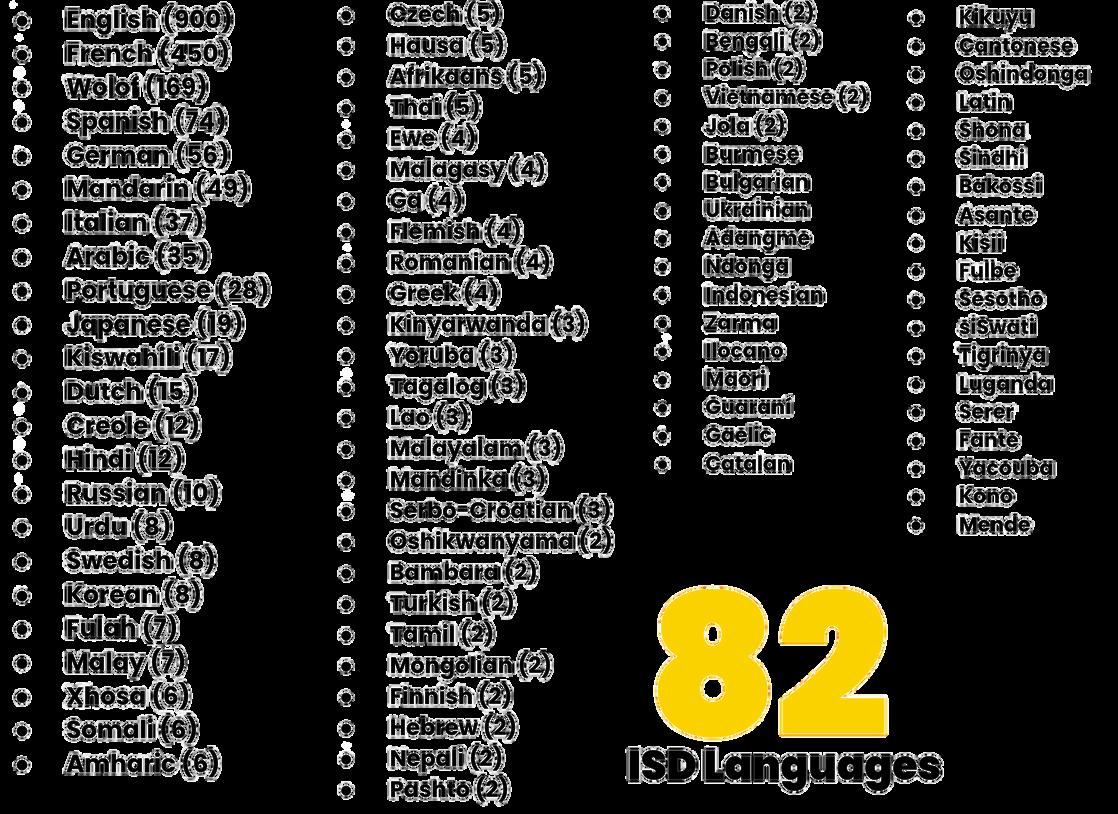
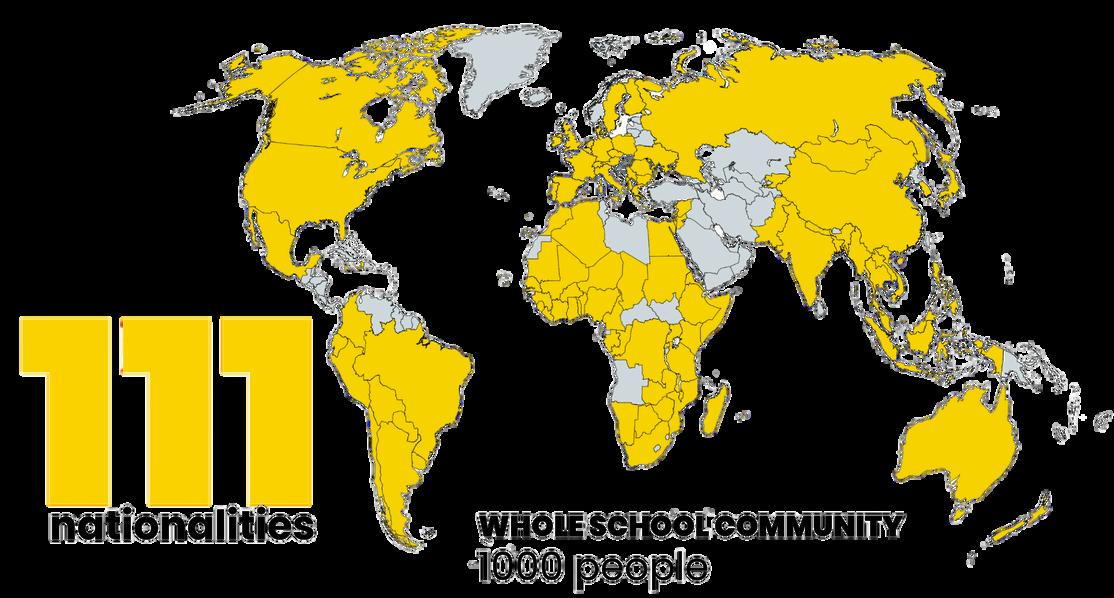
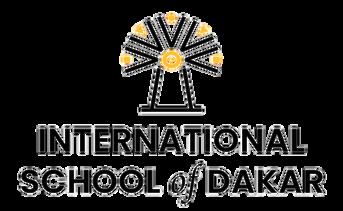
Patrice Lumumba, the first Prime Minister of th Democratic Republic of Congo after it independence from Belgium in 1960, was a ke figure in the struggle against colonialism. H founded the Mouvement National Congola (MNC) and was known for his strong ant colonial stance and efforts to unify Congo. H pushed for Congo’s control over its own natura resources, so their wealth would help th Congolese people rather than foreign power His alignment with the Soviet Union during th Cold War led to his ousting in a coup an subsequent assassination in 1961, wit involvement from Belgian and U.S. forces. H legacy is closely tied to the fight for racial an economic equity, African unity, and resistanc to neocolonialism

PATRICE LLUMUMBA UMUMBA
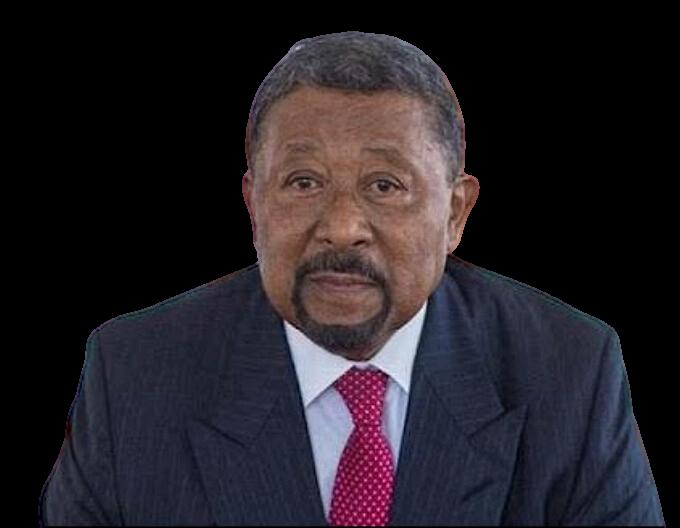
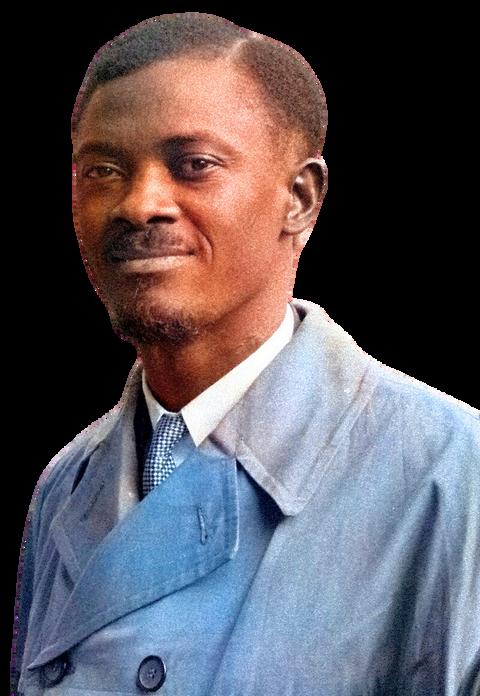


P I N G J E A N

Jean Ping is a Gabonese diplomat and politician of Chinese and Gabonese descent, known for his role as Gabon's Minister of Foreign Affairs and as Chairperson of the African Union Commission from 2008 to 2012. He served as President of the United Nations General Assembly from 2004 to 2005, where he played a key role in facilitating global dialogue and cooperation, including advancing discussions on UN reform and the Responsibility to Protect (R2P) doctrine to prevent genocide, war crimes, ethnic cleansing, and crimes against humanity.
Click on the portraits to learn more about these leaders!

“We are going to bring peace to the country, not the peace of rifles and bayonets, but the peace that comes from men's hearts and their good will.”
Patrice Lumumba
IMBOLO MBUE
Behold the Dreamers by Imbolo Mbue is a novel that explores themes of immigration, the American Dream, and social inequalities. The story follows Jende Jonga, a Cameroonian immigrant living in New York City with his wife, Neni, as they work to build a better life for their family. Jende works as a chauffeur for Clark Edwards, a wealthy executive at Lehman Brothers, while Neni works as a housekeeper for the Edwards family. Their lives intertwine with the Edwards during the financial crisis of 2008.
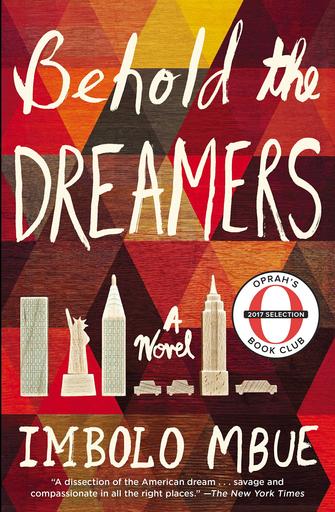

LITERATURE

MONGO BETI

Mongo Beti was a famous writer known for his critiques of postcolonial African society. His novel Mission to Kala (1957) is a satirical and humorous work that looks at the clash between African values and European influence. The story follows young Medza, who returns to his village after studying in the city, only to realize how disconnected he has become from his roots. Tthe story shows the absurdities of both colonial education and the struggles of African identity during colonial rule.

“Whatever the circumstances, people will always need to read fiction, to see themselves in the mirror of the novel. The novel is a wonderful mirror which enables people to become aware of themselves.”
Mongo Beti

CHERI SAMBA

Dorine Mokha was a Congolese dancer. He was considered to be one of the greatest Congolese contemporary choreographers of all time. He used his art to address social issues such as human rights, identity, and the challenges faced by LGBTQ+ communities in Africa. His performances are known for their powerful messages on inclusion and equity.
Chéri Samba, born in 1956 in Kinto M’Vuila, DRC, is a renowned Congolese painter known for his vibrant, textintegrated works that address social and political issues. He started his career in Kinshasa as a billboard painter and comic strip artist. Samba's notable works include "J'aime la couleur" (1997), a selfportrait celebrating color and African identity, "Le Sida" (1988), which raises awareness about AIDS, and "The Wedding of the Painted" (1991), critiquing the commercialization of African art. His work has been exhibited in major institutions like the Tate Modern and MoMA.

DORINE MOKHA

BODYS ISEK KINGELEZ


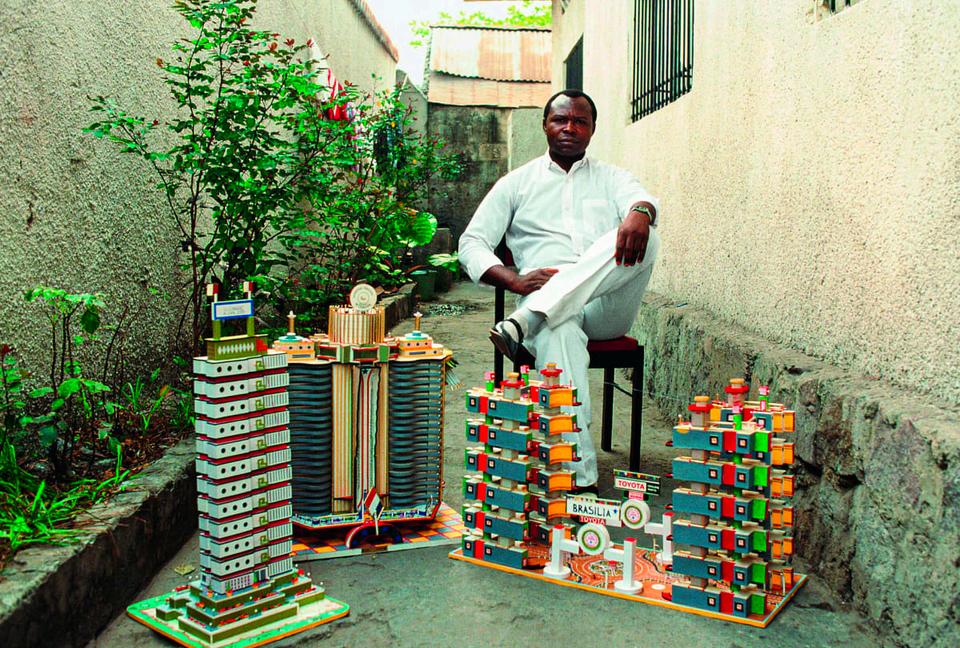
Bodys Isek Kingelez (1948–2015) was a Congolese artist famous for his unique and visionary architectural models. Born in the DRC, Kingelez became known for his intricate, colorful sculptures of imagined cities and buildings, often made from everyday materials like paper, cardboard, and plastic. His work, which he called "extreme maquettes," reflected his Afrofuturistic utopian vision of cities. His urban lands were vibrant, harmonious places free from the issues plaguing real urban centers, such as poverty, corruption, and inequality. His work has been exhibited globally, including at the Museum of Modern Art (MoMA) in New York. Click on the portrait to learn more about his art!

“Without a model, you are nowhere. A nation that can't make models is a nation that doesn't understand things, a nation that doesn't live.”

FRANÇOISE FRANÇOISE MBANGO

Françoise Mbango is a famous Cameroonian triple jumper, best known for her back-to-back gold medals in the 2004 Athens and 2008 Beijing Olympics. Her athletic career is marked by her ability to break barriers in a sport that has seen limited representation from African women at the highest levels. Mbango's success has served as an inspiration for young athletes, bringing not only pride to Cameroon but also highlighting the need for greater equity and support for African athletes, especially women, in global competitions.
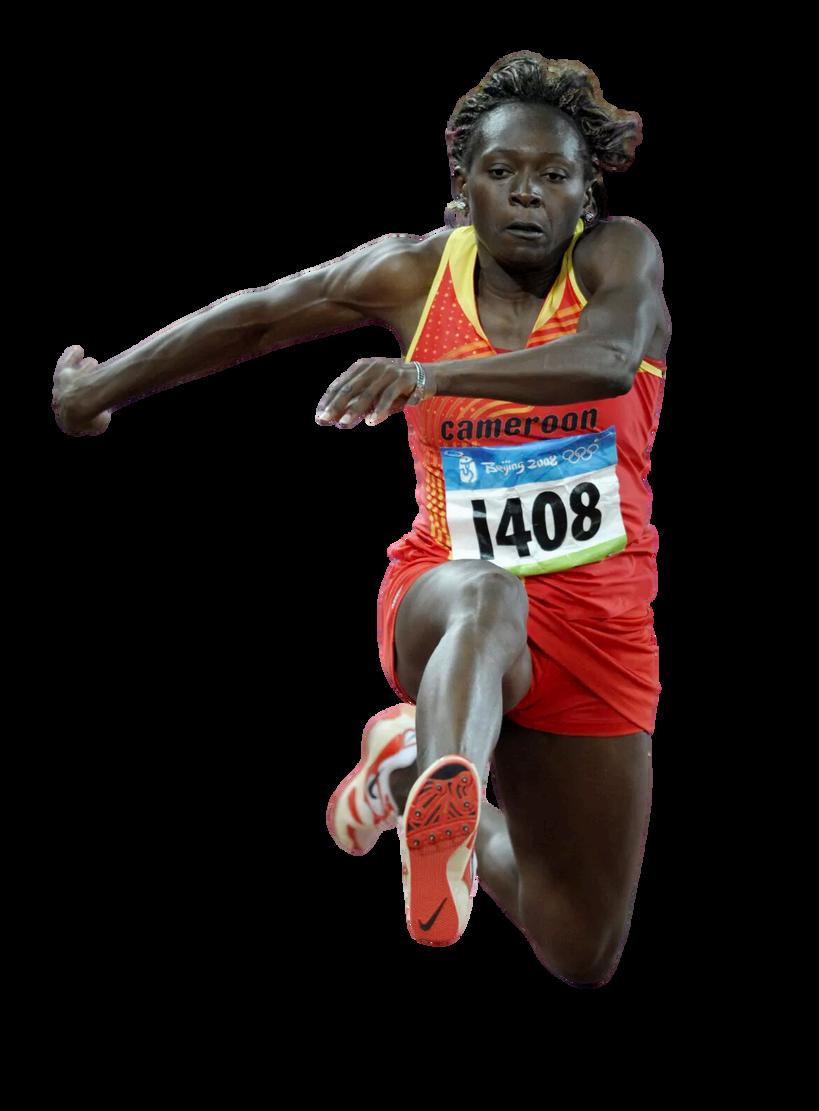




Francis Ngannou is a famous MMA fighter and boxer from Cameroon. His story began with him working as a child in the sand mines, and taking the long migration route through North Africa. He eventually reached Paris and achieved international success as one of the best fighters in the world. He frequently speaks on issues of opportunity, equality, and overcoming adversity. He negotiated for higher pay for athletes, and when challenged by his former boss, he left his role as an MMA champion to switch sports. As a boxer, he surprised everyone by fighting the world champion at that time (in his first ever boxing match), knocking him down and becoming a multimillionaire in the process.
FRANCIS
NGANNOU

Dikembe Mutombo is a retired CongoleseAmerican basketball player known for his exceptional defensive skills and sense of humor. He played 18 years in the NBA, earning 8 AllStar selections and 4 Defensive Player of the Year awards. Mutombo has used his platform to address social and economic disparities. He established the Dikembe Mutombo Foundation, which focuses on improving healthcare, education, and quality of life in the Democratic Republic of Congo.
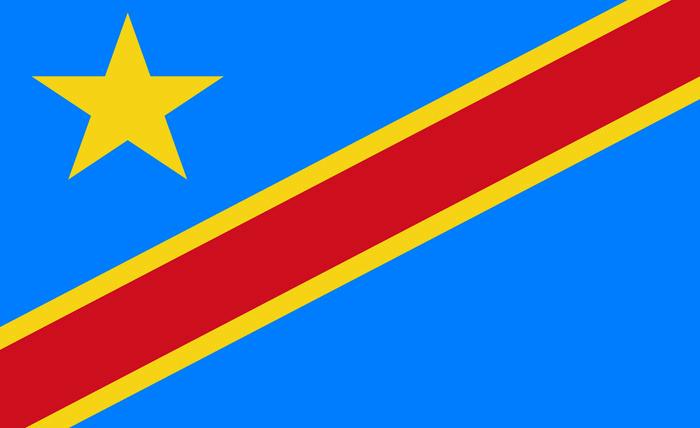




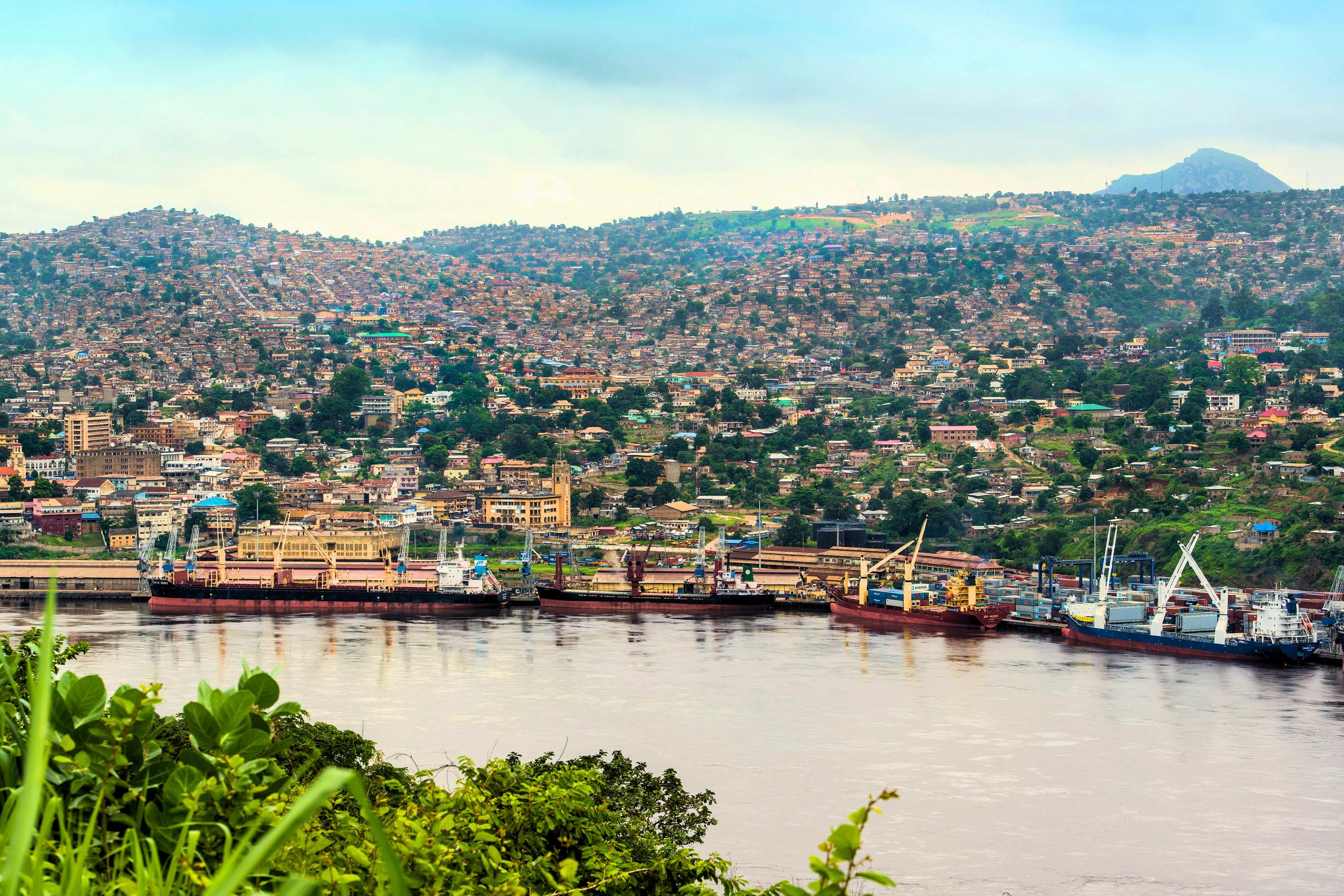

Grace Kodindo is a prominent Chadian obstetrician and gynecologist who is known globally for her work in maternal health. Her work helped reduce maternal and infant mortality rates in Chad and other parts of Africa. Her work was highlighted in the documentary Dead Mums Don’t Cry, which brought global attention to the challenges of maternal healthcare in Chad and other Central African nations.
GRACE KODINDO
IMPORTANT SCIENTISTS
Jean-Jacques Muyembe-Tamfum is a well-known microbiologist and virologist from the DRC, best known for his crucial work in the discovery of the Ebola virus in 1976. Muyembe led research that aided to the development of treatments for hemorrhagic fevers, including the Ebola vaccine, and his efforts have saved countless lives in Africa and beyond.
JEAN-JACQUES



Bonga is a legendary Angolan musician and singer-songwriter. He is best known for his fusion of traditional Angolan music, semba, with more modern genres like folk and Afrobeat. Bonga’s music often addresses political and social issues, particularly the struggles of Angola during its fight for independence from Portuguese colonial rule. His debut album, Angola 72, is considered an African classic.
IPUPA FALLY
Fally Ipupa is a popular Congolese singer, songwriter, and dancer. He is one of the most prominent figures in African and global music. He started his career as a member of the famous Congolese band Quartier Latin International led by Koffi Olomidé, before launching his successful solo career. Fally Ipupa's music blends traditional Congolese sounds with modern beats. His hit albums include Droit Chemin (2006) and Tokooos (2017).
Powerful Music



PAPA
Papa Wemba (1949–2016) was a legendary Congolese musician and one of Africa’s most influential artists. Often referred to as the "King of Rumba Rock," he was a pioneer of modern Congolese music and played a significant role in shaping the sound of soukous, a popular music genre that blends traditional African rhythms with Western influences, particularly from Cuban rumba.


Click on his portrait to listen to his music!

“Il ne faut pas tenir la queue, il faut être devant le peloton.”
Don’t be at the back of the queue, You must lead the pack.
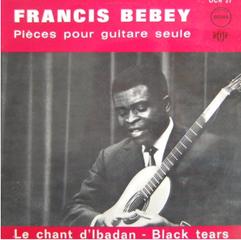

Legendary Music

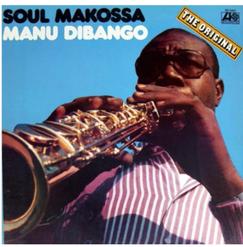

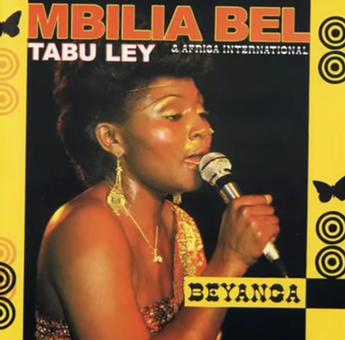


Click on the albums to listen to the music!
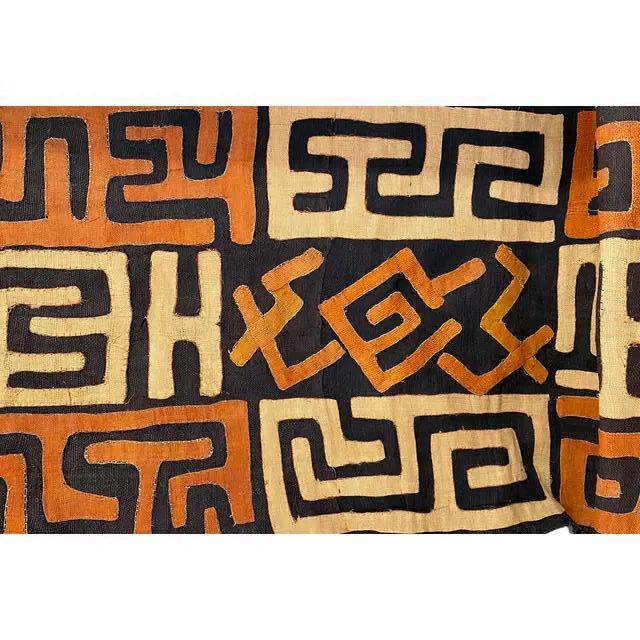
Kuba cloth
A type of raffia textile unique to the Democratic Republic of Congo that is known for its bold designs. Made from raffia palm fibers, each piece is covered with geometric patterns using techniques like cut-pile embroidery, appliqué, and stitching. Patterns are chosen by clan leaders and symbolize communal values, with different women contributing unique designs to larger textiles. Kuba cloth also reflects mathematical complexity, with designs intentionally interrupting expected repetitions, similar to off-beat phrasing in African music. The historical significance of these textiles, especially in rituals surrounding birth and death, highlight the deep connection between Kuba art, society, and the supernatural.
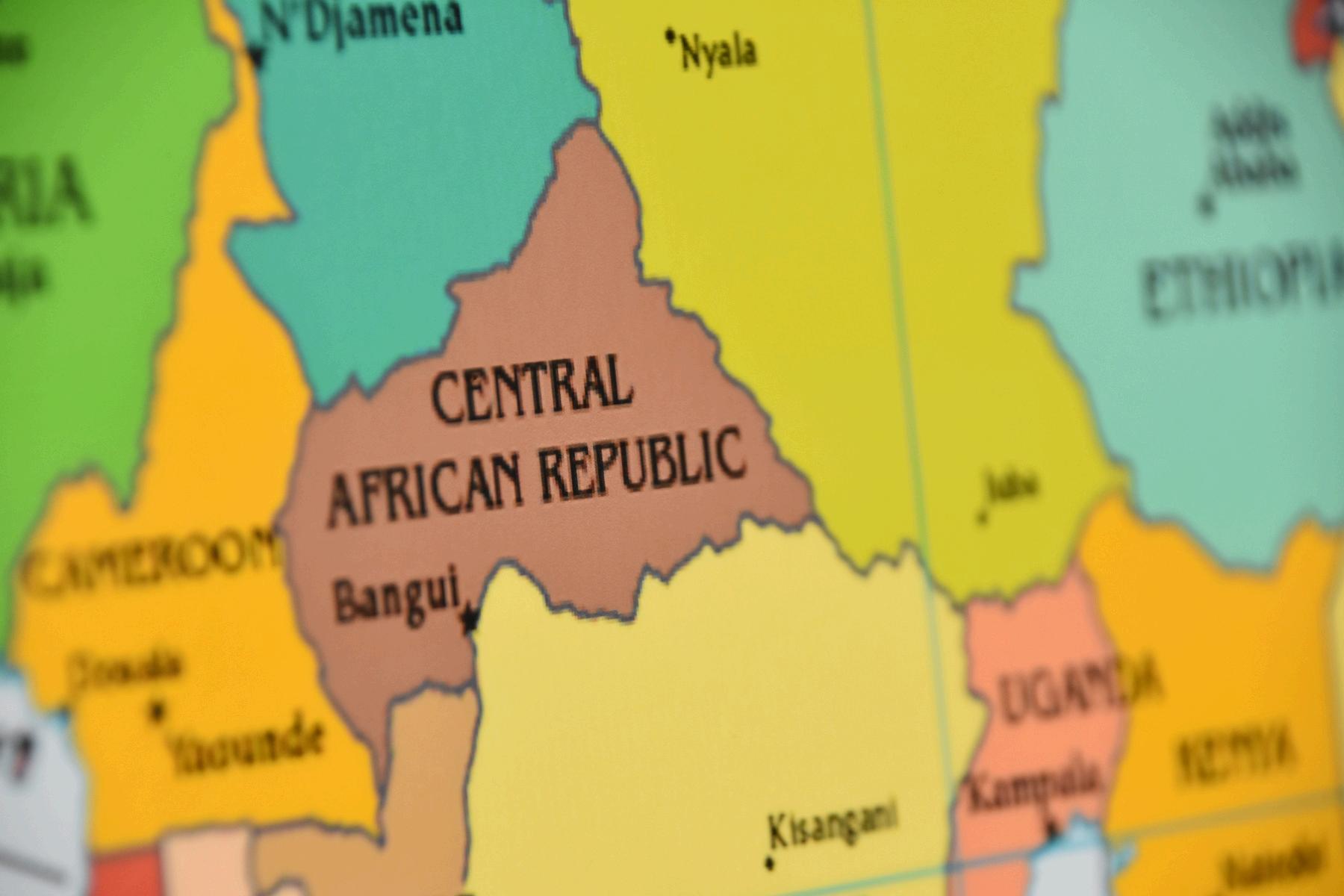

SANGO
Sango is a unique creole language that originated from the Ngbandi language into the main language of the Central African Republic (CAR). It unites a country with many ethnic groups, making it one of the few African-based creoles to attain official language status. Spoken by millions, Sango has simplified grammar and vocabulary, which has helped to it grow across the country. Beyond its practical use in government, education, and daily communication, Sango holds cultural significance as a symbol of identity for the people of CAR.



September 20-27 2024



Rise up this morning, smiled with the risin’ sun

Three little birds pitch b my doorstep
gin’ sweet songs of odies pure and true in’, "This is my sage to you-ou-ou"
gin’, "Don't worry ut a thing use every little thing na be alright"

On September 21, the whole world celebrates the international day for Peace. This past year the United Nation’s designed theme was “Action for Peace: our ambition for the global goals.” There is something transformative about taking a moment to think about what Peace is, what it feels like, and how it impacts the world. Through “Peace You Have My Word,” a writing competition organized by Africa Learning International (ALI), students from international schools in Africa and Europe have put pen to paper to celebrate Peace, Africa, and Antiracism. Each piece of student work shows evidence that education for Peace is a powerful tool to develop self-awareness, poetic appreciation, and critical thinking. It is inspiring to see African and European students countering afro-pessimism as one. Enjoy the enchanting words and the provocative ideas!

-Estelle Baroung Hughes, ISD Secondary Principal & Founder of Peace You Have My Word competition

Click on the dove to hear Nuria Adam from ARIS International School speak about peace

My Peace story by Amara - ISD G12
How to define peace? Peace isn’t just the absence of conflict or violence, the presence of a shared humanity. It is found in our willingness to listen to each other despite our various origins or interests; it is the creation of a conversation in which all parties have an equal opportunity to express themselves, to contribute to the continual building of community. It is getting to know oneself.
Community, in my experience, isn’t something that is just handed to you; you need to play your part in enriching it. Explore your passions. We are at the difficult but innovative age where making mistakes is essential to forming the people that we will become. How are we to know ourselves otherwise?
For example. When I arrived at ISD last year, I found it difficult to engage with Dakar outside of ISD. It wasn’t due to lack of opportunity; it was that those options did not fit my interests. I had to form my own community, as writers spend many years doing, to be able to connect with this new place. To form those relationships that are essential to our development. To our ability to consider things from a more global sense.
Thanks to a collaboration with a school in Ouakam to create a literary magazine, I found the stability and fulfillment I had been seeking. Finally, I could stand on the invisible wall that separates expats from locals and see beyond, to what mattered to people my age with a drastically different upbringing. To read text after text about Macky Sall, about hivernage, or school pressure.
All of this to say: foster those close relationships. There can be no understanding without exposure to diverse perspectives, and consequently, there cannot be peace. I wish you all to find your people, whether it is within ISD or beyond.


Peace is one of those concepts I find it almost impossible to define.
Most people view it as the absence of conflict, a period of tranquillity and calm.
I do not believe we should cling to this definition of peace like a lifeline.
It’s flawed and unrealistic. A world without conflict would be a world without development. Unchanging, problems would be left unsolved, however, peace should still be a concept we strive for.
Peace means equality. Equality for all not just those of us with porcelain skin.
Peace means everyone should have access to healthcare
As a woman, there is a one in 2.1 million chance you will get attacked by a bear, but one in three women will be attacked by men. Peace means as a woman I should fear bears more than men.
Peace means no more bloodshed. No more wars. No one should be shot, killed or tortured for the colour of their skin or loving who they love.
Peace means when I ride the train with my Grandpa, no comment should be made about how he’s not from the UK. He’s lived longer in my home country than me, but I will never have to face this kind of commentary.
Peace means our planet should not be fighting to survive whilst we boil the aquatic life alive. Peace means freedom of choice, the right to clean drinking water and the right to be heard!
Peace means when I talk about having food on my table, being accepted as openly queer, my education, or being able to gain support for my mental health it should not be regarded as privilege but as me having access to basic human rights!
I’m not naive enough to believe all of this is possible without conflict or disagreement, but I believe that this is the version of peace we should strive for.
I’m a Powerful African Peace-maker
This statement is a declaration of identity, heritage, and purpose. It reflects the students’ pride in their African roots and their active role in building peace within their community and region. The phrase highlights the legacy of African peace-building traditions, such as mediation, dialogue, and reconciliation, which have long been practiced in many cultures across the continent. Being a powerful African peace-maker also implies a deep promise to resolving conflicts, and finding harmony.
Video by Mika Mensah - Tema International School
(Ghana)

I am a powerful African peace Maker
ADISSO Yochébed Sènami
Enko Ouaga, 4eme, 13 years old
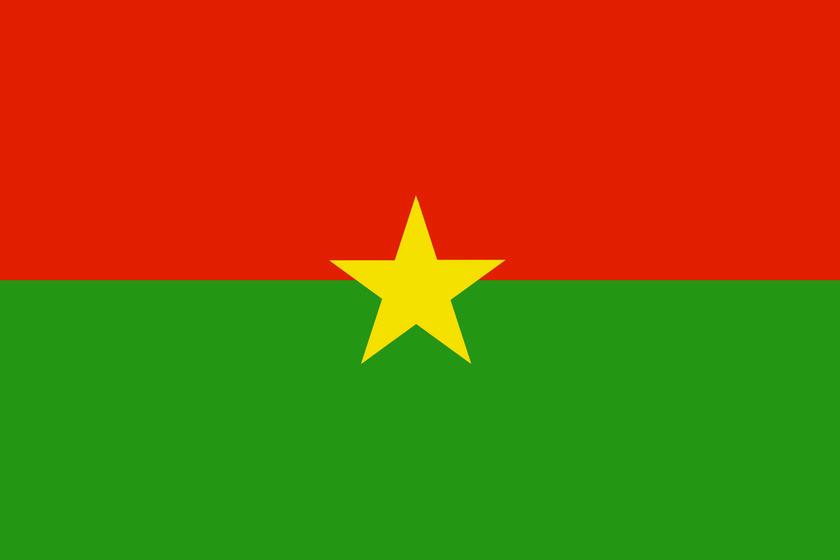

Peace is a message of hope that resonates in the heart and mind of every African. Much more than a desire, it is a primordial need of life. It is the fraternity and unity shared by a people, leading to an environment of cohesion and harmony.
However, Africa is still full of people who think that peacemaking is the responsibility of government, hence the cause of many insurrections, forgetting that they are potential peacemakers,
Peace in Africa will only be possible thanks to the actions of each and every one of us. Children and adults , we can all, in our own way, promote a world of peace, tranquility and conviviality around us.
Cultivating love of neighbor, respect, fraternity, cultural inclusion and, above all, unity in our families and communities is the key to opening the doors to a better Africa, where all nations live in union, serenity and equanimity.
PeaceisaPalaverTree

There is a tradition in some African cultures where communities gather under a large tree to engage in dialogue, resolve conflicts, and make decisions. A "palaver tree" symbolizes a safe space for conversation, growing understanding, cooperation, and reconciliation. This metaphor suggests that peace is not just an absence of violence but a process rooted in collective decision-making and mutual respect. Like a tree that provides shade and shelter, peace requires patience and care, growing stronger as it is nurtured through open communication.
Peace is a Palaver tree
Kekeli Agbozo - 18 years old
SOS - Hermann Gmeiner International College
Where do you find solace?
In the shelter and shade of an anchored giant.
Let us go to the palaver tree where differences between men disappear
Where only common humanity fathers brothers and sisters.
Let us go, grandma is about to tell a story there
How long will it take to decipher its meaning today?
Nine nights of quarrel are nullified beneath its branches.
Not oxygen
Its leaves replenish the air with harmony.
The story went on and on
I like the main character in Grandma’s story
He got in trouble too yesterday
He broke the same window as I did a fortnight ago
Maybe we can play football sometime
A tap on the side I awaken with others beside “You children can never stay awake!”
All my friends have been made here in the shade
Asking ourselves what she rambles about.
The adults take turns playing racounter
I heard babies were born out of shared laughter
Grandma’s voice takes residence in my mind Her tone is different
Indicative that the story had ended


“Peace arrives amidst quarrels Its Vines intertwine links that threaten to unwind
Its fauna facilitates friendships
Once familiar but now factioned
Mother shudders
“Do not hold a hoe or cutlass!”
She mutters; a wooden tool but also a weapon
On the stage of memory, dance visions of cuts
The innocent are beaten to a score of cries and wails
The Palaver tree, a tool but also medicine
A wooden tool to stitch together cuts between us
Medicine to heal anxiety, anger and malice”
Under the shade she goes on,
“In two forms does peace exist
A negative where violence and fear are absent
But men bicker, hate and resent
Where deals are struck with corrupt intent
A positive, where kindness shines at dawn
Where love forms the foundation institutes are built on
And tolerance and respect, Repair and sustain
societies once torn”
I cogitate
To which form of peace does my environment relate?
Peace is, but is so much more than a palaver tree.
NoSustainability,NoPeace

There is an important link between environmental stewardship and global harmony. Sustainable practices —whether ecological, economic, or social—are essential to maintaining peace. Without sustainability, competition over resources, climate change, and environmental degradation inevitably lead to conflict and instability. This idea highlights the interdependence between the health of the planet and the well-being of its inhabitants, urging collective responsibility to protect our world. True peace can only be achieved in a world where resources are managed wisely and the environment is preserved for future generations.
No Sustainability No Peace
Sarah Zoungrana Enko Ouaga (15 years old), Burkina faso


Who are we? Peace makers or trouble makers?
Certainly trouble makers. We create endless wars, we kill each other for insignificant reasons and then we're surprised when peace doesn't reign. We make life difficult for future generations, but all we care about is power, money, killing and lying to each other. Who are we? Where are we going? Why are we doing this? These are the questions our future generations will ask because of our actions? We have forgotten our identities, we no longer love each other, we have become greedy. Let's not do things thinking only of today, but of the consequences they will have tomorrow. If we're not conscious today, who'll be conscious tomorrow? If we don't work together today for the good of others tomorrow, why are we looking for peace? In the end, it's going to be too late for us. Elizabeth Barret one day said : "light tomorrow with today".
We need to educate tomorrow's generation, so that before they take actions, they don't just think about the consequences today, but tomorrow too. There's a quote that says "sustainable development is a peace policy of the future". Which means no sustainability, no peace, no peace, no future.

Visible Roots



South Asia / ISD highlights




